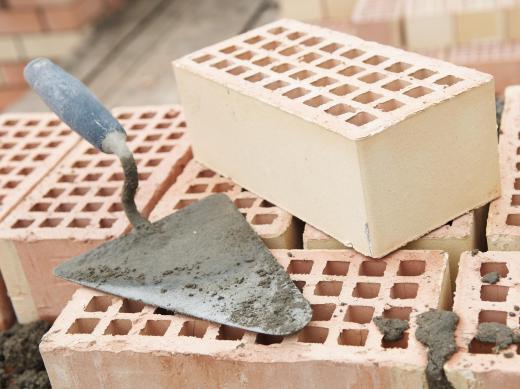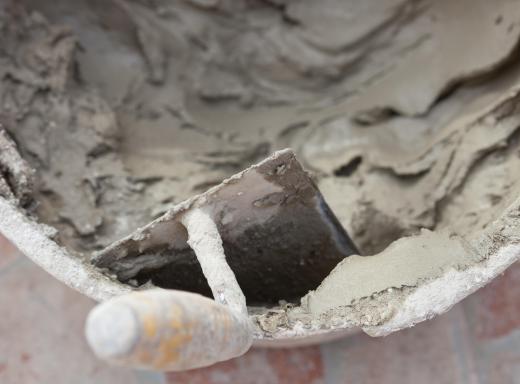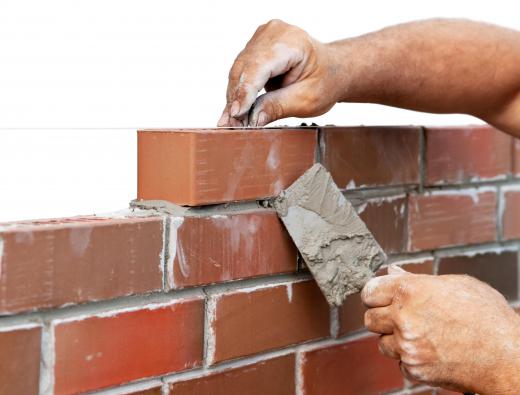Brickwork is the process of installing or restoring brick homes, walls, or other structures. At its most basic, brickwork simply involves stacking brick in even rows with mortar used to hold the units together. More advanced projects include adding brick siding or landscaping features to a home or building. Finally, brickwork may also include restoring historic brick structures to their former glory by replacing damaged bricks and mortar. Each of these projects requires the work of a skilled brick mason along with a variety of special tools and equipment.
New brickwork involves laying brick in rows, or courses, to form a wall or building. Traditionally, this work involves building a double layer of brick with a cavity in between to construct the basic shell of a house. The bricks along each row are offset for added strength and stability, and the top and bottom of each brick is buttered with cementitious mortar to form a tight bond. Workman rely on trowels to add mortar, and wet saws to cut the brick to the desired size to complete each row. This type of work is generally performed on scaffolds or lifts.

Workers may also use brick to add an attractive finish to the exterior walls of an existing structure. In this case, the brick acts as a form of siding, and is attached to the primary structure using metal brick ties. Most modern brick homes are actually built using this technique, and include only a single layer of brick rather than the dual-layer of the past.

Brick can also be used to construct non-building features. Patios and landscaping walls made from brick can last many years, and can be used to complement a variety of design styles. Brickwork may also include interior structures like a brick fireplace or floor within the home.
Masonry contractors can change the look of a brick structure using a variety of techniques. They may combine different colors or sizes of brick, or simply rotate different bricks as they move along a course or row. Different brick designs can also be achieved based on the layout of the brick, including herringbone and basket-weave patterns.

Over time, existing brickwork may require restoration, or repointing, to reduce the effects of water damage and time. This typically involves removing the old mortar and any damaged bricks, then replacing them with new units and fresh mortar. By restoring brick structures in this manner, masons prevent future water damage and help to preserve historic structures.
